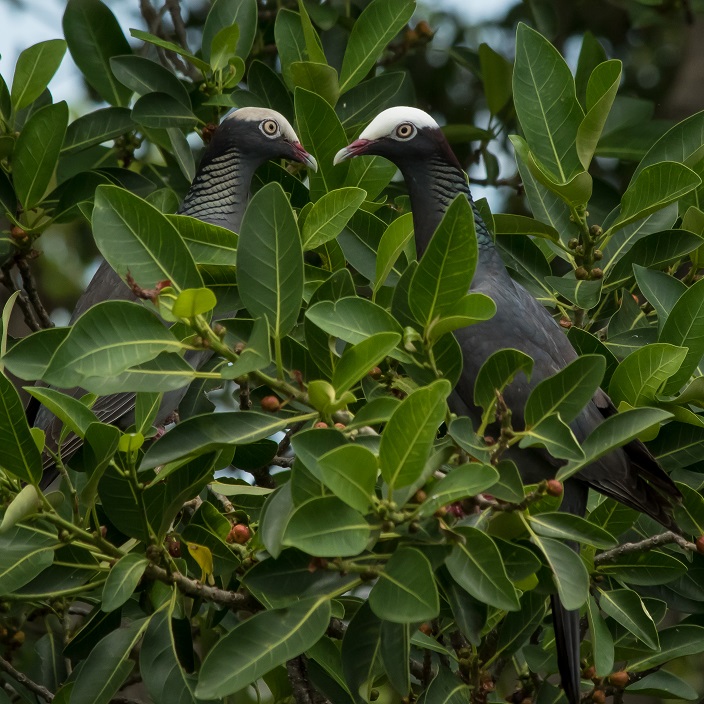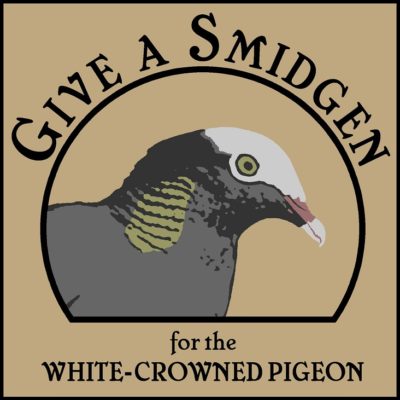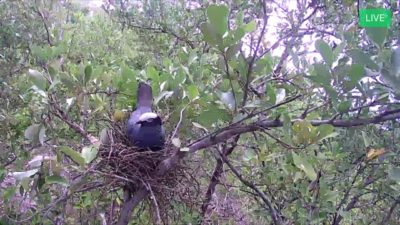Critter Cam Goes Live in Florida Keys National Wildlife Refuges

A Live, Local, “Critter Cam” has been established on a backcountry island in the National Key Deer Refuge. The camera is focused on a pair of nesting white-crowned pigeons, who currently are incubating two eggs in their nest. We welcome the public to view the live video feed at their convenience by visiting either the National Key Deer Refuge or the Great White Heron National Wildlife Websites and then clicking on the critter cam links.
www.fws.gov/refuge/National_ Key_Deer_Refuge/
or go DIRECTLY to the CRITTER CAM by clicking here or here
www.fws.gov/refuge/great_ white_heron/

Critter Cams provide lots of great information to biologists; including a behind the scenes look at animal biology and ecology, without disturbing them or influencing their behavior. This data can be very helpful in managing a species and their habitats. Critter Cams are also excellent education and outreach tools. Whether you are an educator, a naturalist, a birder or interested citizen there is much to learn and enjoy while watching the videos; no matter where you live! We want to thank our Friends group FAVOR Florida Keys for their continued support of and partnership in this project.
White-crowned pigeons are amazing birds; here are 10 reasons you should “Give a Smidgen for the White-Crowned Pigeon”
- Amazing Parents- They make sacrifices to ensure that their young are raised in a safe place. Pigeons nest primarily on backcountry mangrove islands where there are little or no predators like snakes, raccoons, or feral cats. However, there is little to eat there, so they take shifts on the nest while the other parent flies to the mainland pine rockland and hardwood hammock habitats to eat. This can be a long commute, sometimes as much as 10-15 miles one way.
- Unique- South Florida is the only place to support this species in the U.S.- their safety zone in an otherwise hunted range. The Florida Keys National Wildlife Refuges habitat provides safe nesting and foraging areas for tens of thousands of these birds each summer.
- Natures tree planters- consider them one of natures winged “Johnny Appleseeds”; they eat mostly fruit of trees like figs, poisonwood, blolly, seagrape, pigeon plum and many more. These trees are invaluable to hundreds of other wildlife species too. When the pigeon is done digesting the fruit, the seeds are deposited (in their scat) to start new trees elsewhere.
- Pigeons are part of the natural food web. They provide food for hungry falcons and hawks. As you might imagine, becoming food isn’t top on their list so they have adapted quick flight and incredible aerial maneuvers to help them avoid predators and stay alive.
- Economic boost- Given that this bird is found only in extreme south Florida, and the Caribbean we get a lot of visiting birders and outdoor enthusiasts that are interested in seeing them. It’s a “lifer” for many birders and outdoor enthusiasts who bring millions of dollars to local economies each year. Cha- ching!
- Ecological asset- Helps us monitor population changes and gauge the health of the refuge habitats. With years of data on nesting locations and numbers
 of white crowned pigeons, the USFWS can keep tabs on any changes that occur to help inform management of these state-threatened species.
of white crowned pigeons, the USFWS can keep tabs on any changes that occur to help inform management of these state-threatened species. - Beautiful portrait- Photographers find that getting a good photograph of the white-crowned pigeon is a challenge, but well worth it. The beautiful white head, iridescent green neck, red bill and feet, and slate-colored body make for wonderful images. You’ll have to put your time in as they are wary of people and skittish about being out in the open. (The web cam is a great non-intrusive way to view them).
- Cultural significance- Called the “bald pate” throughout the Caribbean islands, the bird is hunted for sport and as a food source.
- Tells A Story- The four Florida Keys National Wildlife Refuges are part of an incredible network of federal public lands that include national wildlife refuges, national parks, and more. These lands, which belong to the American people, support an incredible diversity of threatened and endangered plant and animal species, migratory birds, and thousands of others. The pigeon is just one of many species that help us showcase the importance of protecting and conserving these lands so that the plants and wildlife are here for future generations of Americans to appreciate.
- Stewardship- It’s easy to help these incredible birds; it’s as simple as planting native trees in your yard, community park, or school. When you plant a native fig, blolly, pigeon plum, seagrape or other fruit-bearing native tree you are not only helping the white-crowned pigeon but hundreds of other bird and wildlife species that depend on the food that the tree produces. If you want to create a wildlife habitat, it’s as simple as “if you build it, they will come”.
- Reason for concern- This population has experienced an alarming decline across its range. It is listed as a Threatened Species in Florida, is a Migratory Bird Species of Conservation Concern according to US Fish and Wildlife Service, is on the IUCN Red List (International Union for Conservation of Nature) as Near Threatened, and is on the State of the Birds Watch List produced by NABCI (North American Bird Conservation Initiative).

